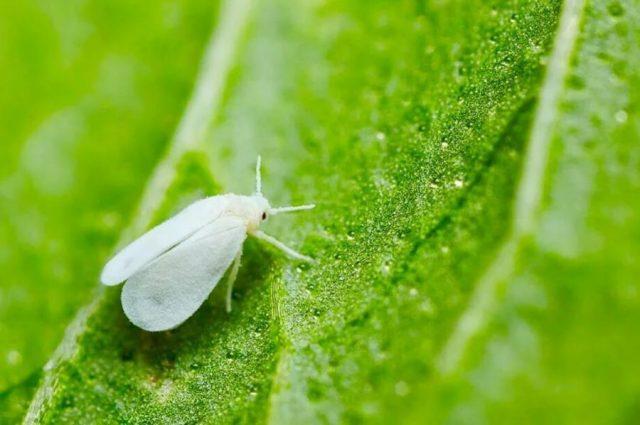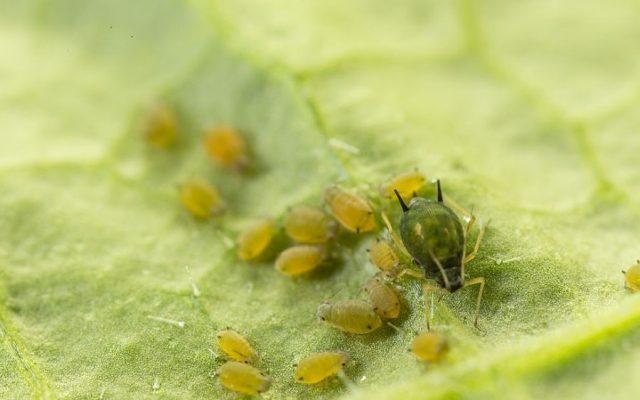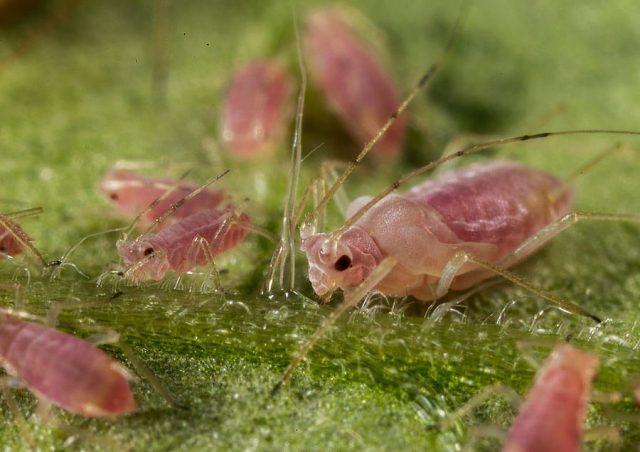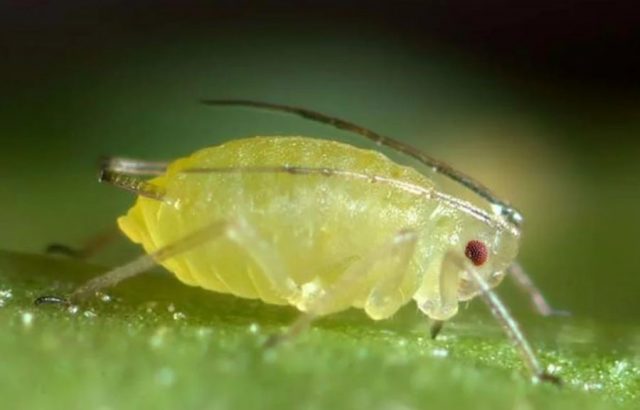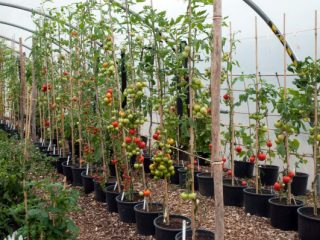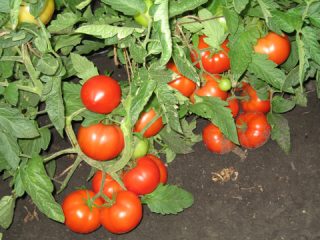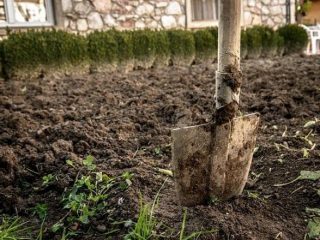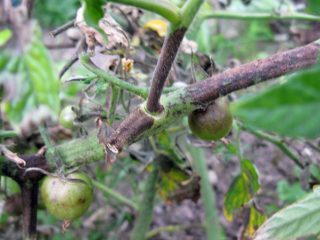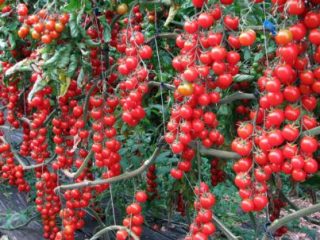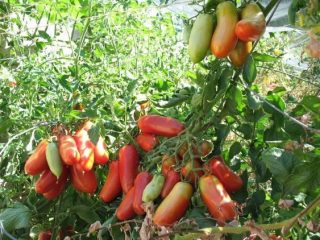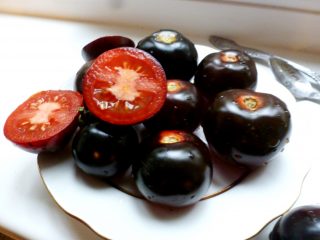Content
Aphids appear on tomatoes very often and cause significant damage to plantings. You can get rid of insects in many ways - both homemade solutions and chemicals.
Description and types of pest
Aphids are insects from the order Hemiptera, represented by several thousand species. It has a very small body, about 2 mm in length, and is colored red, black, green, white and brown. There are wingless and winged insects, but even the latter do not fly very well.
Aphids are extremely fertile and produce several generations during the season. Just one insect can give birth to tens of thousands of new individuals. The parasite feeds on plant juices of various crops, and secretes so-called honeydew onto the leaves. The sweet solution attracts other insects, many of which also harm the tomatoes.
Only certain varieties of the parasite pose a danger to tomato bushes. Usually on tomatoes you can find:
- White aphids. The small parasite lives in the upper layers of the soil and primarily attacks the root part of tomato bushes. Tomatoes wither and quickly wither due to disruption of nutritional processes.
White aphids are particularly hardy, since their eggs survive even cold winters in the soil.
- Melon aphid. The small midge is black wingless and greenish with wings. Appears in greenhouses in June, in open ground it begins to harm tomatoes at the end of July or in August.
The melon aphid is a carrier of dangerous viral diseases of tomatoes.
- Potato aphid. The insect has a light green or red color. Harmful to tomatoes both in greenhouses and in open ground. It is quite large in size - up to 3.5 mm in length.
Potato aphids in Russia are found on tomatoes, including in the polar regions
- Tobacco aphid. The pest damages tomatoes relatively rarely; it mainly spreads to tomato bushes from potatoes, peach trees and cabbage. Causes discoloration and curling of leaves.
Tobacco aphids are found mainly in warm regions and in greenhouse conditions
Aphids of any species reproduce by laying eggs, but some species have viviparity.
Signs of defeat
Aphids are very small in size and settle mainly on the underside of leaf blades. With a weak infestation, it can be quite difficult to see the insect on a tomato. But some signs indicate the presence of a parasite:
- deformation and curling of leaves;
- discoloration and yellowing of plates;
- powdery or black coating on the leaves;
- unnatural glossy shine of tomato greens.
At the same time as aphids, ants often appear on tomato bushes. These pests are much easier to spot because they are larger in size and darker in color.
Reasons for appearance
Black, green and white aphids can appear on tomatoes even with good care of the plantings. However, there are some factors that increase the likelihood of a pest outbreak. In particular, aphids often attack tomatoes:
- when bushes are close to peaches, potatoes, cabbage and other crops that also suffer from the parasite;
- with a large number of weeds in the beds or in the greenhouse;
- in wet and warm weather;
- in the presence of uncleaned plant debris in the beds;
- when tomato bushes are planted too densely.
The likelihood of aphids appearing on the site increases if a large number of ants live in the garden. Insects often live side by side and take part in each other’s life activities.
What harm do they cause?
Aphids on tomatoes pose a great danger to bushes. It is necessary to begin combating the pest immediately, otherwise the crop will be seriously damaged. If untreated, aphids:
- sucks plant juice from leaves and stems of tomatoes;
- leads to yellowing, deformation and falling off of the plates;
- impairs flowering and ovary formation;
- slows down the development of tomato bushes;
- attracts other insects to tomatoes;
- creates a comfortable environment for the proliferation of dangerous fungi;
- carries incurable viral diseases.
When actively breeding, aphids can densely cling to the green parts of tomato bushes.In this case, the processes of photosynthesis are disrupted - sunlight does not fall directly on the surface of the leaves.
How to fight aphids on tomatoes
The fight against aphids is associated with certain difficulties. The pest is quite hardy and even after treatment often returns to tomato bushes. Despite this, there are effective methods of getting rid of the parasite.
Mechanical methods
If there are very few aphids on tomato bushes, the pest can be controlled without the use of chemicals. Typically, several methods are used to eliminate the parasite:
- manual collection - insects are simply removed from the surface of the leaves with a damp sponge or rag, the procedure is carried out daily until the aphids are completely eliminated;
- treating tomatoes with water - the bushes are watered with a lukewarm liquid with low pressure, the pest can be washed off in the process;
- pruning - if aphids have appeared only on some leaves and tops of stems, the affected parts are removed and burned in the far corner of the garden.
It makes no sense to use mechanical methods if the plantings are seriously damaged. They do not have the highest efficiency, require effort, and processing takes a lot of time.
Chemicals
The best effect is achieved by treating tomatoes with chemicals. Insecticides have a depressing effect on the vital systems of the insect, prevent aphids from feeding and ultimately cause their death.
Intavir
A useful insecticidal agent has a paralyzing effect on insects. To prepare the solution, you need to stir one tablet of the drug in a bucket of water. Spraying is carried out according to the instructions in warm, partly sunny weather, at 10 m2 consume about 1.5 liters of product.
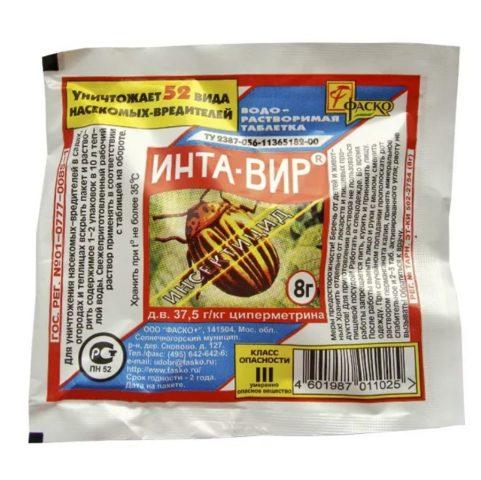
Tomatoes are treated with Intavir three times per season.
Commander
A powerful contact-intestinal preparation helps get rid of aphids, thrips, whiteflies and other pests on the site. Sold as a soluble concentrate, the main active ingredient is imidacloprid. Aphids under the influence of the drug lose the ability to move and die within 24 hours. To prepare the solution, you need to dilute only 5 ml of the product in a bucket of water.
The drug Komandor is sprayed on tomato plantings in calm weather in the morning or evening. Usually just one treatment is enough, but if necessary, spraying can be repeated after 3-4 weeks.
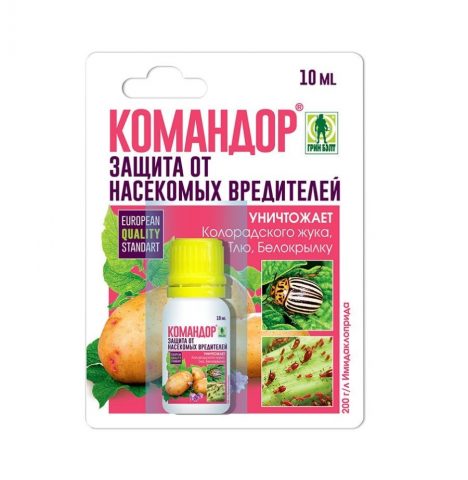
Commander acts on both adult aphids and larvae
Biological drugs
Biologically based preparations demonstrate good effectiveness against aphid infestation. They are not as dangerous to the tomatoes themselves as chemicals, and they quickly eliminate even large colonies of parasites.
Fitoverm
The drug contains the substance aversectin C, which is of natural origin. Fitoverm has an inhibitory effect on aphids and a number of other pests, and helps to quickly remove insects from tomatoes.
To create a working solution, 3 ml of concentrate is diluted in a bucket of lukewarm water. The resulting composition is used for spraying tomato bushes in dry, warm weather. Within three hours after treatment, the drug begins to act, and results become noticeable after about 3-6 days.
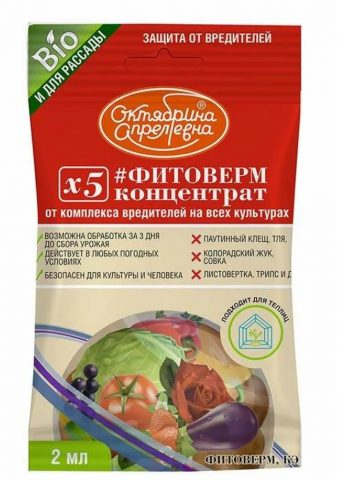
Treatment of tomatoes with Fitoverm can be repeated when aphids return to the leaves
Bitoxibacillin
The biological product contains live bacteria that eliminate adult aphids and pest larvae. You should dilute 7 ml of the product in 10 liters of liquid, and then spray the tomatoes in a greenhouse or in open ground. Repeated treatment is carried out if a real need arises, no earlier than a week after the first.
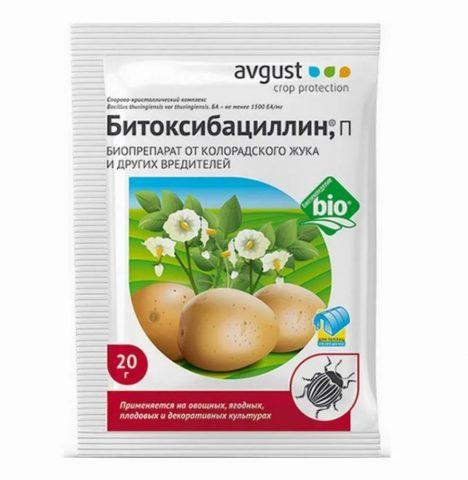
You can harvest tomatoes five days after using Bitoxibacillin
Folk remedies
If there are very few aphids on tomato leaves, you can use home remedies to eliminate them. Several remedies have a good effect.
Ammonia solution
Ammonia tincture works well against aphids if used at the first symptoms of damage to the bushes. 30 ml of ammonia is diluted in a bucket of water and stirred thoroughly, and then immediately sprayed.
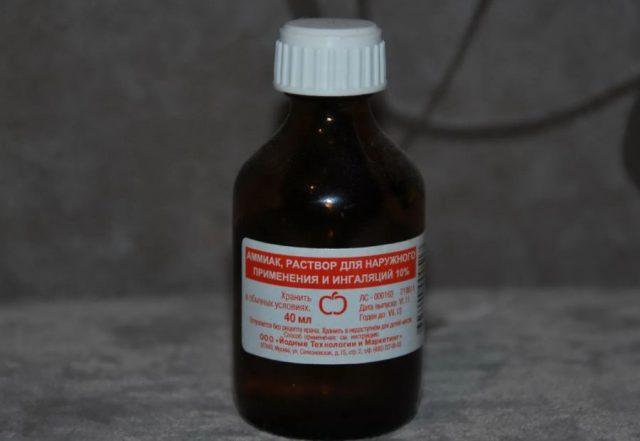
Treatment of tomatoes with ammonia is repeated every three days until results are obtained.
Soap solution
You can fight aphids using ordinary laundry soap. The way to make a medicinal preparation is to stir about 20 g of shavings into 10 liters of liquid, and also add a glass of wood ash.
The finished product is filtered from the sediment through cheesecloth and the tomato bushes are processed. You can repeat spraying daily until the aphids completely disappear from the leaves.
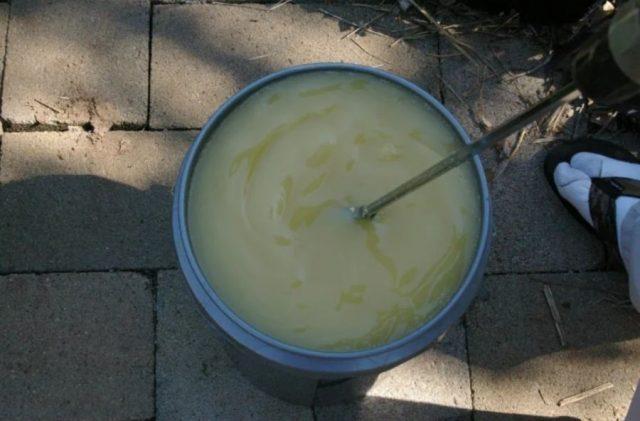
The soap solution forms a protective film on tomato leaves and prevents the reappearance of aphids
Natural enemies
Natural enemies of aphids are sparrows, robins, tits and other birds.When growing tomatoes in open ground, they prevent the appearance of the pest, since they destroy insects and do not allow them to reproduce properly. But it is undesirable to attract birds to the garden if berry crops grow next to the tomatoes - the birds will cause damage to the harvest.
Some insects help get rid of aphids in greenhouses and soil - praying mantises, sand wasps, crickets and ground beetles, spiders, ladybugs. To attract them to the site, you need to plant certain plants near the tomatoes - daisies, amaranths or marigolds.
How to get rid of aphids on tomatoes in a greenhouse
To treat tomato bushes in a greenhouse, use the same means as for spraying plantings in open ground. But attention needs to be paid to some additional activities. In particular, it is recommended:
- maintain a humidity level in the greenhouse of at least 85% and a temperature of 22-24 °C;
- regularly ventilate the greenhouse in the evening;
- remove plant debris in a timely manner;
- do not allow excessive thickening of plantings.
With the onset of autumn, the greenhouse must be thoroughly cleaned and disinfected with bleach.
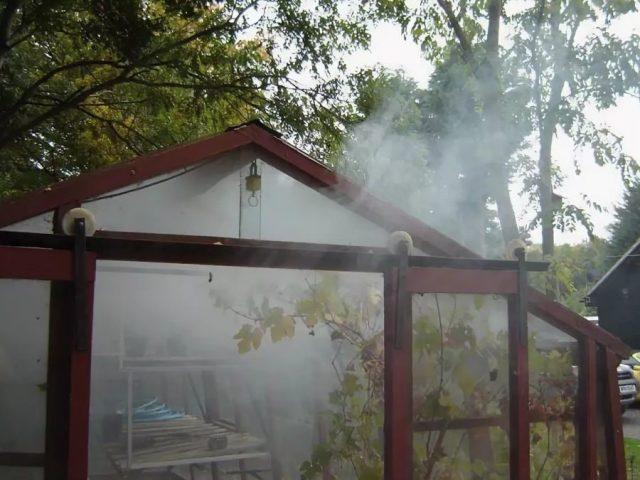
Fumigating the bushes with tobacco smoke works well against aphids on tomatoes in a greenhouse.
Prevention of occurrence
It is recommended to give priority to aphid prevention. When growing tomatoes you need:
- control the volume of watering and do not over-water the bushes;
- regularly clean the greenhouse or beds from remnants of tops and other debris;
- loosen the soil and weed from time to time;
- do not plant tomatoes too close to each other;
- carry out preventive treatments of bushes with homemade solutions or biological preparations;
- fight ants on the site.
Before planting tomatoes in a greenhouse or in the ground, it is recommended to treat the soil with insecticides. This will destroy aphids in the early stages of development and prevent them from moving onto vegetables.
Conclusion
Aphids on tomatoes can cause serious damage to the crop. If there are a large number of insects, chemicals must be used for spraying. But if there are few pests on the leaves, treatment with homemade preparations will be quite sufficient.
